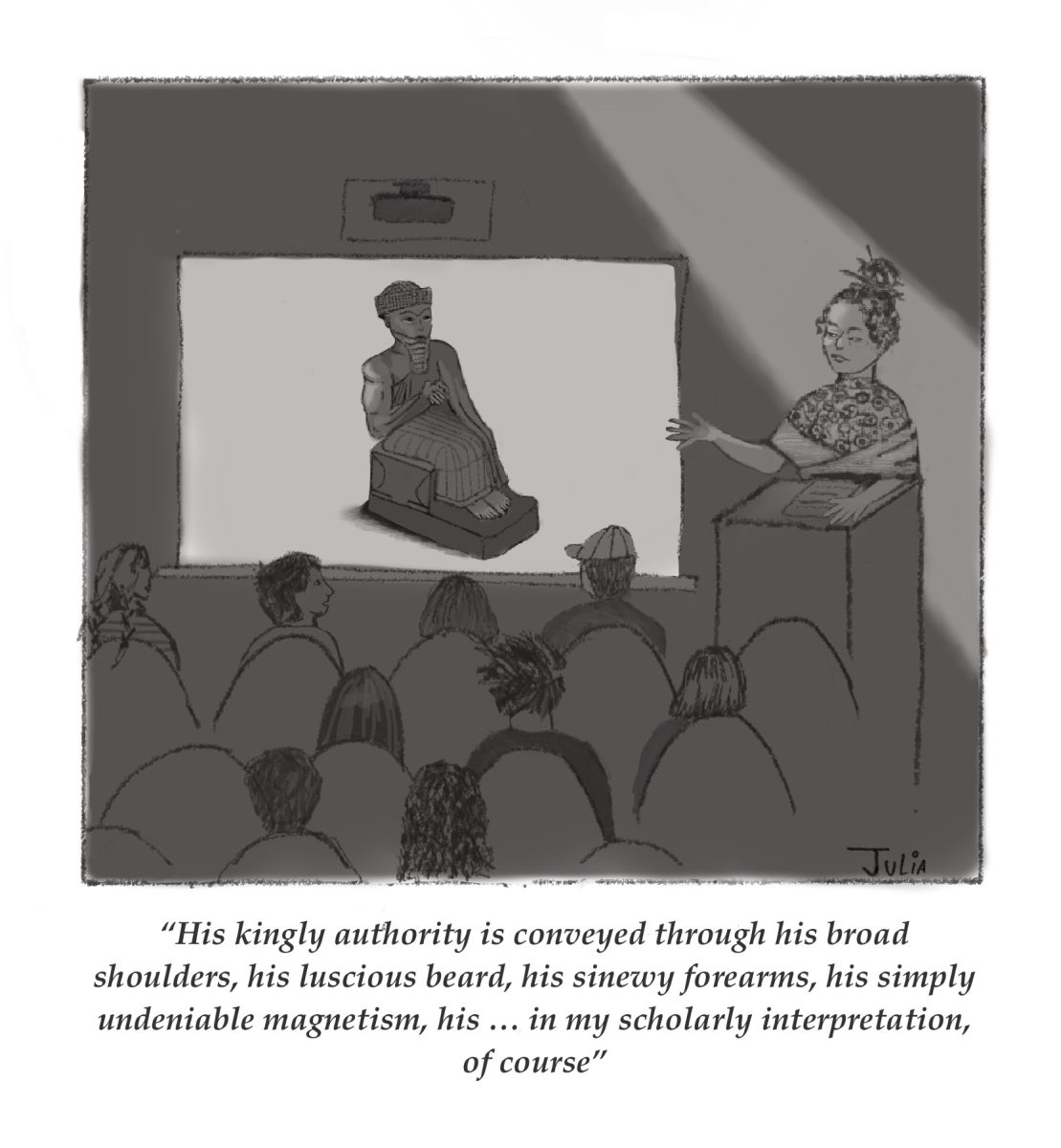A few months ago, a professor told me that she had cut another book from her course’s assigned reading list. “When I started teaching at Williams,” she said, “I assigned a book per week. No way I could do that now.”
That got me thinking: Are Williams students reading less than we used to? Why?
To find out, I sent a survey to 84 professors (I targeted Division 1 and 2 faculty, excluding economics, in order to capture professors who typically teach reading-based courses). Twenty-eight professors responded, and their answers supported my hunch.
More than 60 percent of professors said they assigned “less” or “significantly less” reading now compared to when they started their careers at the College (I limited the survey to those with the title of “professor” or “senior lecturer,” as a proxy for faculty who’ve taught at Williams for a decade or more). Not a single professor reported assigning more reading. The same proportion of professors said they believed their students actually read less overall.
To gather more data, I turned to the College’s course syllabus archive. I selected ten humanities classes that have been taught repeatedly by the same instructor over the years, then compared syllabi from 2000-2005 with their equivalents from the post-COVID era.
Here too, I saw a decline in the volume of assigned readings. On average, the post-2020 courses assigned 10-15 percent fewer pages than their Y2K counterparts — though, of course, not all pages are created equal.
I also reviewed dozens of other Division 1 and 2 syllabi, which revealed additional changes. Humanities professors, of course, assign far more podcasts, digital media, and GLOW posts than they used to. They also appear to be assigning fewer full books, opting instead for excerpts, course packet entries, and articles.
All this information put together — along with the knowledge that Williams students are enrolling in more STEM and fewer humanities courses — leads to a not-so surprising conclusion: Williams students, on average, are reading less than we used to. In particular, we’re reading fewer full-length books. The decline isn’t severe — and much of my data is based on faculty perception — but it’s observable.
Is a decline in book-reading a bad thing? Sure, Williams students are reading less, but we’re certainly listening to more podcasts and writing more code compared to when Bush was president.
But there are several reasons to worry about this decline. For one, if students are skipping readings, they cannot effectively participate in class — worsening the seminar experience for everyone. For another, when professors cut readings, they limit opportunity for their most dedicated pupils. I know many diligent students who would read an extra book if it were assigned. But since professors don’t assign those books, students don’t read them.
And, to nobody’s surprise, reading full books — many books, cover-to-cover — is good for you in a way that problem sets, coding labs, and movies are not. Studies show that reading books improves vocabulary, attention spans, critical thinking, and even longevity. “Regular readers sleep better, have lower stress levels, higher self-esteem, and lower rates of depression than non-readers,” Ceridwen Dovey writes in The New Yorker.
Regardless of whether there has been a decline, a culture of skimming readings should merit consideration — even if previous generations were skimming too. Professors should understand whether their syllabi are working as intended. “When I’m picking courses, I usually sign up for two courses I’ll do the reading for and two I won’t,” a friend told me during pre-registration.
Why are readings on the decline?
Why are we reading less than we used to? To find answers, I spoke face-to-face with more than a dozen professors — partly out of curiosity, and partly because I had readings I was avoiding.
The number one answer: It’s the damn phones. Phones shorten our attention spans, making it harder to focus on a single task — especially slow, mentally intensive tasks like reading. Phones also devour time. A student who spends half an hour before bed on Instagram is not spending that time reading Knausgaard.
Some professors even expressed worry about students’ ability to read — concerns that have received plenty of national coverage. And for good reason. We live in a nation where 30 percent of adults can’t read at the level expected of a 10-year-old child, according to the OECD’s director for education and skills. Ten-year-old children, meanwhile, just marked their worst literacy scores on record.
Phones aren’t the only issue. Professors also noted that their students are busier than ever — not in the sense that we’re doing more work, but in the sense that we’re doing more varied work, juggling a variety of extracurricular and preprofessional commitments in addition to our academics. Our schedules are peppered with one-hour meetings, 30-minute coffee chats, two-hour rehearsals, and 90-minute workouts. (Take, for example, the editors of this newspaper. If you spend the whole weekend conducting interviews and writing articles, and all of Tuesday formatting the paper for printing, then when, exactly, are you reading a book?)
I’d also point to a third reason: Grade inflation has removed one fundamental incentive to read. The College recently revealed that 76 percent of all letter grades are now in the A range. Twenty-five years ago, that figure stood at 21 percent. Why would a busy, rational student go the extra mile when a sufficient grade has already been secured?
And so, students read less and skim more, and professors respond by cutting out boring chapters and long texts in small fonts, and students try to keep their dwindling attention focused on the pages that remain. An anxious sophomore squeezes a seminar’s worth of readings into the two hours between the end of crew practice and the start of choir rehearsal.
What should we do?
The reduction in reading at the College, according to both professors and the syllabus archive, has not been catastrophic. Older generations often skimmed as well — just ask any alum.
But with ChatGPT looming, a close look at reading practices at the College is urgent. It’s urgent because we can see, by looking outside of the Purple Bubble, what students’ shirking of academic work can do to the soul of a school. At Harvard, class attendance “has become more encouraged than required,” writes the Crimson editorial board. The chair of Georgetown’s English department tells the Atlantic that his students have trouble staying focused on a sonnet, let alone a book.
What is to be done? First, professors need to face the truth: Their students are getting distracted constantly (both by phones and extracurriculars). But their students, in general, also came here to learn — they just need the right incentives, which professors have the power to create and enforce. For example, implementing accountability mechanisms (like the dreaded reading quizzes) give students less room to hide. It’s a bleak world in which such pedagogical tools are necessary, but they may soon be.
Second, professors should ban phones and laptops in the classroom, as a first step to de-centering technology in academic life. Whenever possible, assigned readings should be physical, not digital.
Third, professors need to stop underestimating AI tools. Students can currently use AI to turn an afternoon’s worth of readings into a crisp three-bullet point list. ChatGPT is already being used, constantly, right here at the College. And the technology is only going to get more powerful from here.
This is a slow crisis with no single cause. It requires an active response.
David Wignall ’25 is an economics and history major from San Francisco, Calif. He is an executive editor-at-large at the Record.




